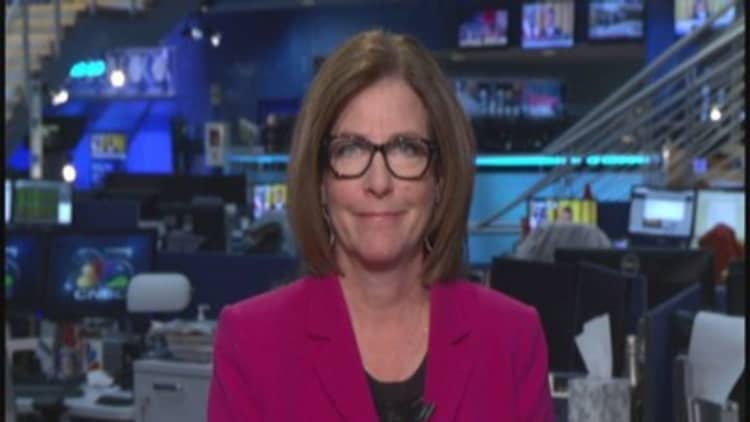Are your investments boring? Do ETFs that track major indexes put you to sleep? Have regular old commodity holdings made you question your purpose in life? Maybe it's time to spice up your portfolio. We went looking for the most unique ETFs we could find—investments you'd find hitchhiking on the side of the road at 2 a.m. wearing a Viking helmet and a tutu.
Read MoreInvestors look to ETFs as fund managers disappoint
Should you give them a ride? We asked Morningstar fund analyst Robert Goldsborough, S&P Capital IQ director of ETF and mutual fund research Todd Rosenbluth, and ETF.com ETF analyst Spencer Bogart to find out.
Going nuclear?
Market Vectors Uranium + Nuclear Energy ETF (NLR) tracks an index of nuclear energy companies. It charges 60 basis points in fees.
"NLR has been around for a while," Goldsborough said. "It used to be called Market Vectors Nuclear Energy ETF but then added 'uranium' after Global X launched a uranium ETF that gathered some decent assets for a time. Uranium is a volatile market, though." He noted that the fund has traded since August of 2007 but only has $70 million in assets.
Read MoreETFs for an aging population
Bogart noted that the fund is more invested in coal and oil than nuclear energy, despite its name and description. Its biggest holdings—Duke Energy, NextEra Energy and Southern Company—each have only about 15 percent of their business in nuclear energy and much more in coal and oil. "It's like calling Facebook a gaming company because they bought Oculus VR," he said.
"It's a utility ETF with a little industrial exposure, but most people would not combine utilities with industrials," Rosenbluth said.
Are these oldies golden?
PowerShares NYSE Century Portfolio (NYCC) tracks an index of companies incorporated in the U.S. for at least 100 years. It has attracted $3.9 million since launching in January and charges 50 basis points in fees. The fund holds almost 400 stocks, including Alcoa, Williams Companies and (somewhat surprisingly) Foot Locker.
"I can't think of a rationale for this, even if stability is what you're after," Bogart said. He noted that the fund includes holdings in companies that are far newer than 100 years, so long as they've acquired an older organization, and that old companies that have recently declared bankruptcy (such as General Motors and CIT Group) are included, as well.
"It's a unique portfolio in that what's missing is as significant as what's there," said Rosenbluth. He noted that two of the smallest sectors in the S&P 500—materials and utilities—make up 21 percent of NYCC's holdings, while technology and health-care exposure is very light. He also noted that the fund's 50 basis point fees seem high for a passive portfolio with low turnover.
Read MoreLeveraged ETFs: The risks and the rewards
"It's an interesting idea, but it's not clear if the marketplace is clamoring for [it]," Goldsborough said.
Invesco, which issues the PowerShares line, declined to respond to the analysts' comments.
Bitcoin—the gold standard of virtual money
The Winklevoss Bitcoin Trust (COIN) will launch later this year if it clears regulatory hurdles. Modeled after the decade-old 30-billion-plus SPDR Gold Trust (GLD), this ETF would make the cryptocurrency much easier to buy.
"If it's approved, it will increase the market for bitcoin, because you can hedge it on the derivatives market," Bogart said. "It will be far more accessible." He expressed reservations about it actually coming to market, though, as the SEC will have to ensure reasonable protection for investors, which he described as a huge hurdle.
Read MoreMarket's oddest investing ideas put to the test
"It will provide liquidity to an illiquid market," Rosenbluth said. "Unfortunately, it may not be a market people should be investing in. There is significant volatility and little or no analysis of how bitcoin will perform over time. It's hard enough to forecast where gold or the dollar will trade."

"It's anyone's guess if it's marketable," Goldsborough said. He noted that bitcoins are riddled with risk—governments can make them illegal, and hackers can manipulate their pricing through denial of service attacks—but cited the support of attorney Kathleen Moriarty as an asset to COIN.
Moriarty's helped many ETF issuers and is known as Spiderwoman for her work drafting the prospectus for the groundbreaking SPDR S&P 500 ETF prior to its debut 21 years ago. She might have genuine arachnid-derived superpowers, too, but that's unlikely, and outside the scope of this article.
Investing in spinoffs
The Guggenheim Spin-Off ETF(CSD) launched in 2006 and has $573 million in assets under management at 65 basis points. "There's often hidden value in companies that can get unlocked once they're spun off and are better known to investors," Rosenbluth said. He noted that the portfolio—dominated by consumer product, financial and health-care companies—is fairly broad, though it includes few technology stocks.
Goldsborough praised the fund and noted it had attracted significant assets. "I think this is one of the ideas here with the greatest investment merit," he said. "I think people see that, too."
Bogart expressed reserves about the fund, however. "It's hard to know what it'll hold when it rebalances," he said. "A spinoff can be good or bad. If you like a particular spinoff, you can just buy equity in it."
Go to the dark side with fallen angels
Market Vectors Fallen Angel High Yield Bond ETF (ANGL) tracks a market-value-weighted index of bonds that were rated investment grade at issuance but later downgraded to junk status. It charges 40 basis points, but despite having launched back in 2012, has but $16.5 million under management.
"This is another one that's an interesting idea and, I'd say, a marketable one," Goldsborough said. "Historically, fallen-angel bonds have outperformed other high-yield corporates and have had higher price returns than debt originally issued as high yield. Plus, fallen-angel issuers often are larger and more established companies than are firms that issue debt-rated junk at time of issuance. Now, that said, the [ANGL] has really struggled to get assets. ... It hasn't been a successful launch, but I still think it's an idea that should have some merit."
Rosenbluth noted that the fund has performed well. It's returned 9.76 percent for the year ending October 30, compared to 4.73 percent for the iShares iBoxx $ High Yield Corporate Bond ETF (HYG), its $14 billion rival in the high-yield bond universe. "It may make sense for investors," he said. "But downgrades happen for reasons."




